Explore the art of crafting watercolor paints with readily available kitchen staples.
Introduction
Watercolor painting is a beautiful and expressive type of art that captures your imagination. However, high-quality artist-grade watercolor paints can be quite costly, making them an aspiration that’s challenging to attain for many, especially in regions where art supplies are scarce or economic conditions are modest.
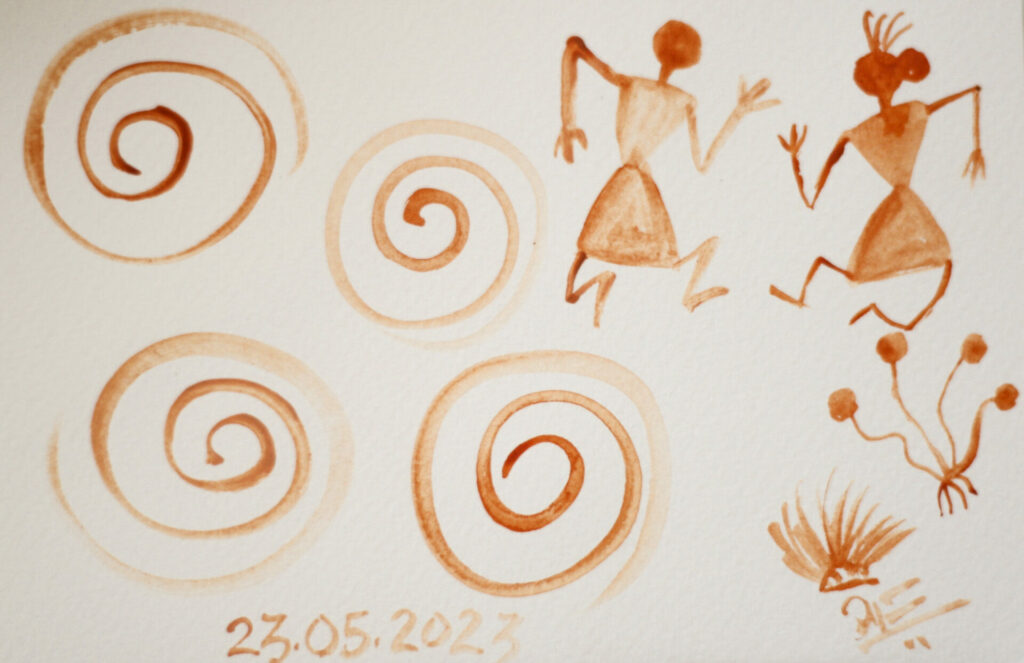
Watercolor sketch created using paints formulated with soil, cornstarch, and rice flour as binders.
The Spark of Inspiration
The inspiration for my cost-effective watercolor paint recipe was sparked by the narrative of one of my blog readers. This individual, whose identity I’ll respect by withholding, was actively involved in a social project in a lesser-known city in Uganda. Their aim was to seek guidance on making DIY watercolors for a group of young people who are known as “Peer Counsellors.” These young individuals devote their time to teaching life skills to fellow youth. What sets them apart is their unwavering resilience in the face of financial hardships.
Among these Peer Counsellors, is a young leader who exemplifies the strength of character and determination found within the community. Despite personal challenges, these individuals aspire to create a brighter future, even in a region where job opportunities are scarce.
As they navigate these obstacles, their determination to pursue creative passions and dreams remains unwavering. The story of this lesser-known city in Uganda struck a chord with me, and it ignited my curiosity and led me to come up with an inexpensive and affordable DIY watercolor paint recipe using common household ingredients.
Join me on an exploration into the realm of DIY watercolor paints, where we’ll turn simple household staples into watercolor paints.
Ingredients
- Foraged Pigments or store-bought (if you have some )
- Cornstarch: Easily accessible in most households and stores, cornstarch is a versatile ingredient known for its binding properties.
- Rice Flour (optional): If you want to experiment further, rice flour can be used as an alternative binder.
- Raw Cane sugar as humectant
- Tap water
- Calcium carbonate ( food grade or pulverised eggs shells)
- Soap solution
- Household vinegar or edible white vinegar
- Glycerine (optional)
- Distilled water (optional)
Tools required
- Cooking pot designated for creative projects
- Measuring cup or spoon
- Spatula for mixing the ingredients
- Clean jars or empty watercolor pans for storing the paints
- Glass plate
- Glass muller
- Watercolor paper
- Paint brushes
General Procedure for Creating Watercolor Paints
A) Gathering Pigments:
- Make pigments from natural sources such as soil, rocks, minerals and plants.
- Grind these pigments into a fine powder before use.
- Alternatively store bought artist grade pigments (Schmincke, Sennelier, Kremer etc.) can also be used in this process.
B). Preparing the Binder:
- For the cornstarch binder, mix cornstarch with cold water in a 1:2 ratio (1 part cornstarch to 2 parts water) in a saucepan.
- Heat the mixture over low heat, stirring constantly until it thickens into a paste. Allow it to cool.
C). Mixing Pigments:
- Combine the powdered pigments with your cooled cornstarch paste. Adjust the ratio of pigment to binder to achieve your desired color intensity.
D). Using Rice Flour as Binder(Optional):
- If you wish to experiment with rice flour, mix it with water to create a paste of similar consistency to the cornstarch paste.
E). Storing Your Paints:
- Store your homemade watercolor paints in airtight containers or small pans for easy access and to prevent them from drying out.
Corn Starch Binder
I experimented with various paint-making combinations using cornstarch and rice flour binder and discovered that the cornstarch produced the most favorable outcomes.
I made a choice to use cornstarch as the binding agent. I began by taking 3 teaspoons of cornstarch and cooking it in350ml of water. The outcome was a solution with a smooth, liquid texture and a translucent appearance.
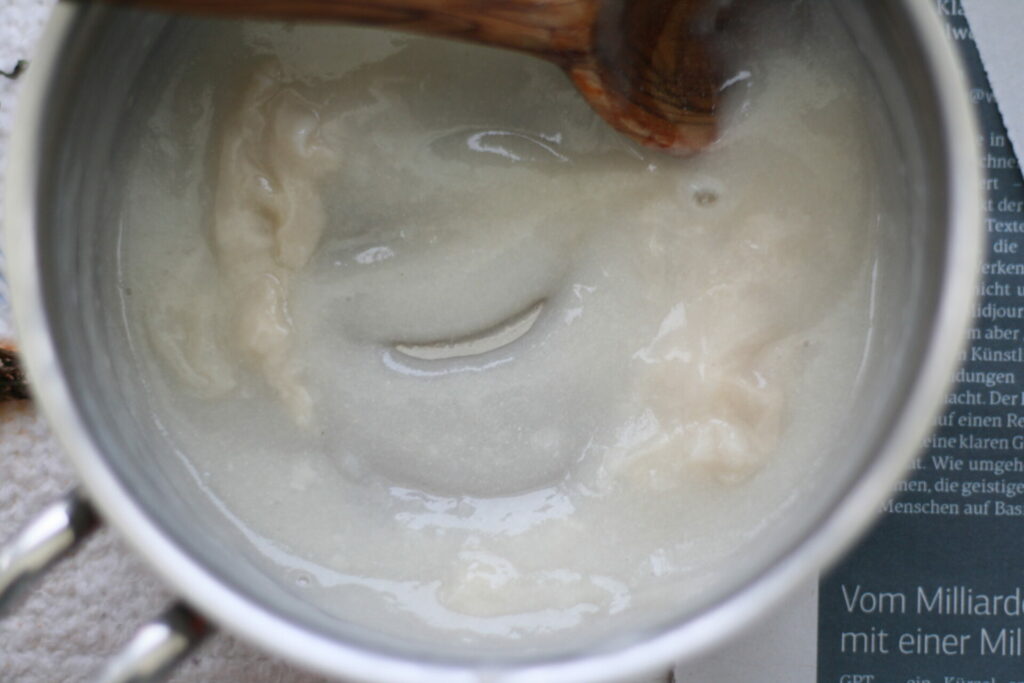
Preparation of Corn starch
Making Sugar syrup to function as a humectant
As a cost-effective substitute for the usual honey used in handmade paints, I opted for sugar syrup. Sugar syrup preparation involved combining 8 teaspoons of raw cane sugar and 6 coffee measuring spoon of icing sugar in around 100ml of water. I heated this mixture until it reached a consistency similar to that of honey.
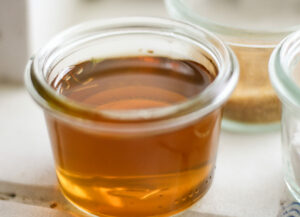
Sugar syrup as a humectant for the binder.
To continue with the experiment, I divided this solution into three equal parts, each measuring 30ml. From these portions, I developed three distinct binding agents. This process was undertaken to determine the optimal binding agent for paint production.
Following are the various combinations that I experimented with:
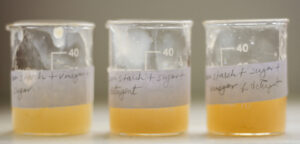
Cornstarch as a binding agent, utilizing formulas 1, 2, and 3.
Paint Making Process
To create the paint, I followed a procedure similar to the one detailed in my previous blog post. I also experimented with using these binders for making gouache using calcium carbonate.
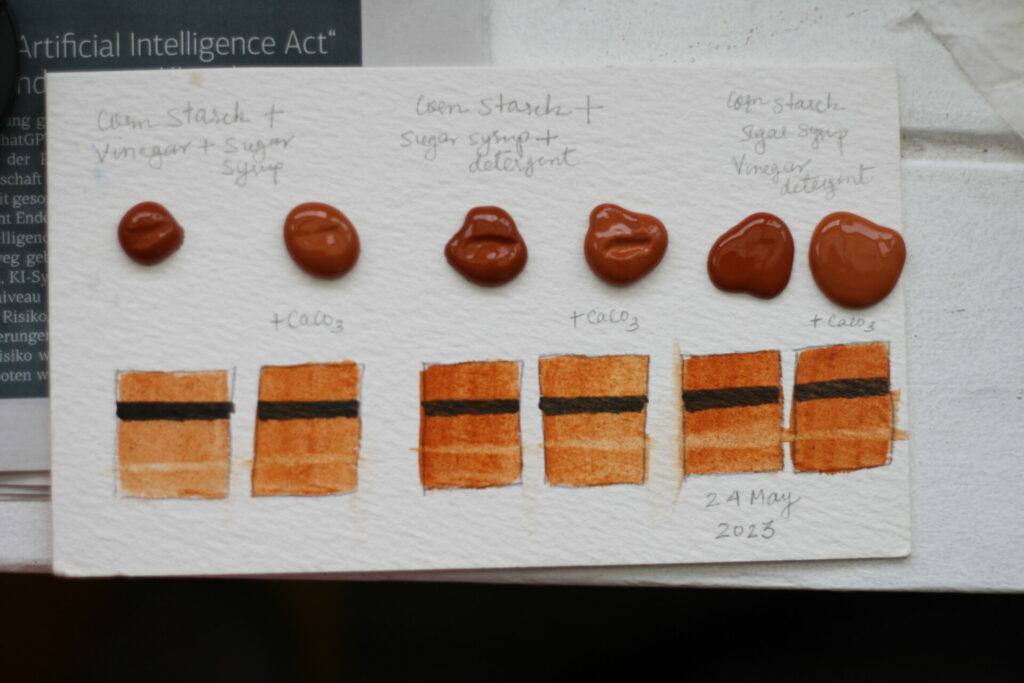
Watercolor and gouache paint dots produced using binders 1, 2, and 3.
Tips for Using Your Homemade Watercolors
- Experiment with different pigments and binder ratios to create a diverse palette of colors.
- Allow your paints to dry in the pans before using them.
- To use your homemade watercolors, simply wet a brush and pick up the desired color from the pan. Mix colors as needed on a palette.
- These paints can be used on various surfaces, including paper, canvas, wood or even fabric.
A sneak peek into the creative output of the youth using cornstarch
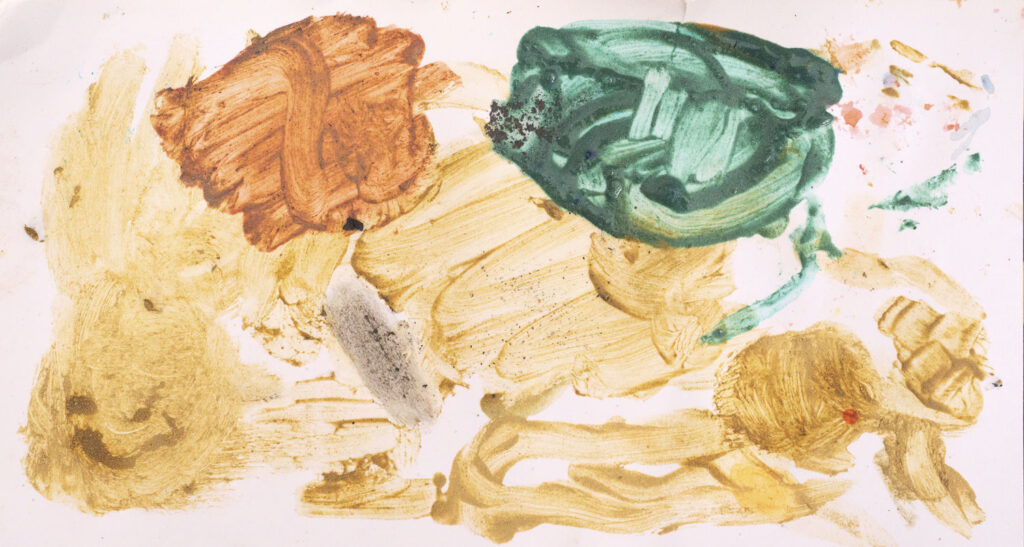
Photo courtesy: David Gross
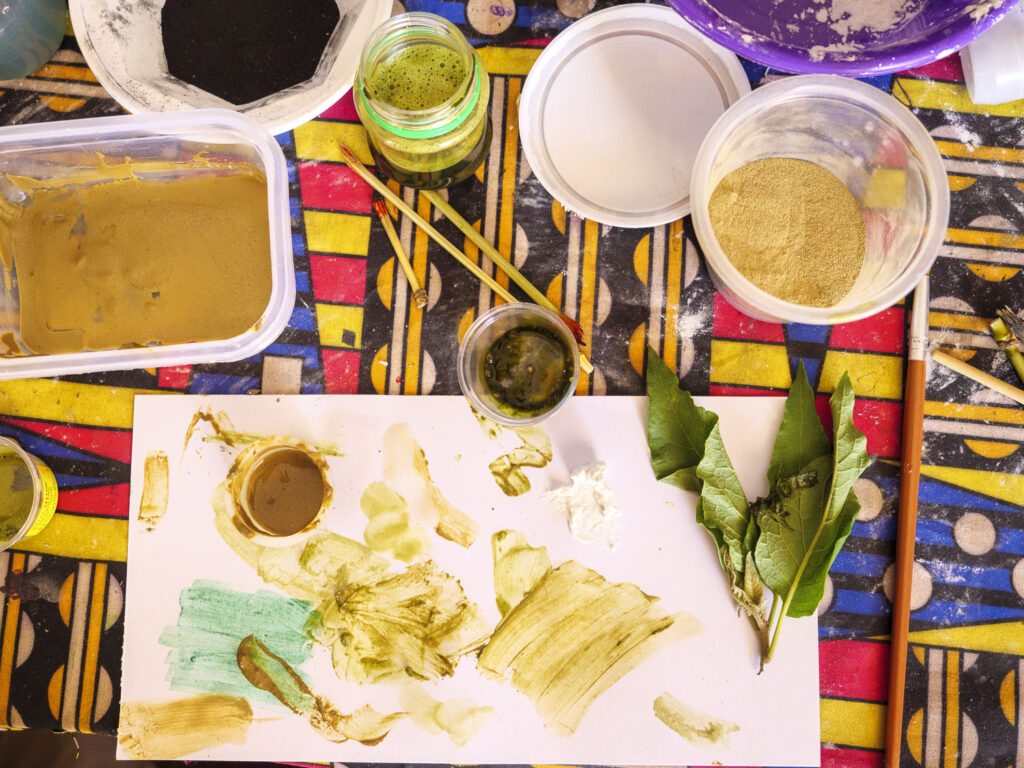
Photo courtesy: David Gross
Ongoing Progress and Partnerships: The Journey of Paintmaking Continues
As an update, the young individuals persist in their endeavor to produce watercolor paints, and their progress remains consistent. They’ve encountered a variety of clay colors and are diligently refining their skills in levigation and grinding. However, the quest for a suitable muller/grinding plate remains a challenge.
On a brighter note, they’ve successfully obtained Acacia senegal gum, well-known for its exceptional qualities in producing gum arabic, from a village associated with one of the group members. They’ve been successfully incorporating it into their paint-making process.
Furthermore, they’ve embarked on a mentorship journey through https://www.pigmentsrevealed.com with Melonie Ancheta from http://www.nativepaintrevealed.com taking an active role in guiding and supporting their endeavors. Isn’t it truly remarkable!
Conclusion:
Creating watercolor paints with cornstarch as a binder allows you to make art supplies more accessible to communities with limited resources. By foraging pigments and using common household ingredients, you can create vibrant watercolor paints that are not only budget-friendly but also environmentally sustainable. This innovative approach to art materials can empower individuals and communities to express themselves through the beautiful medium of watercolor painting, regardless of their economic circumstances, all thanks to the inspiration sparked by a reader’s request.
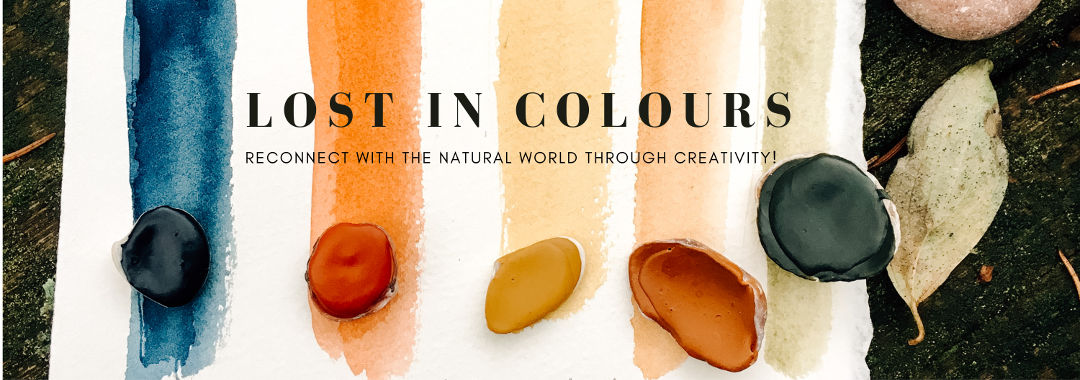
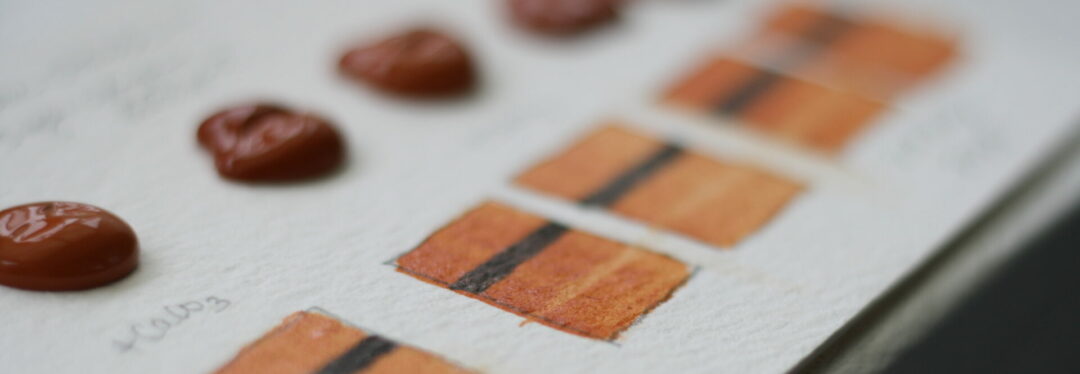
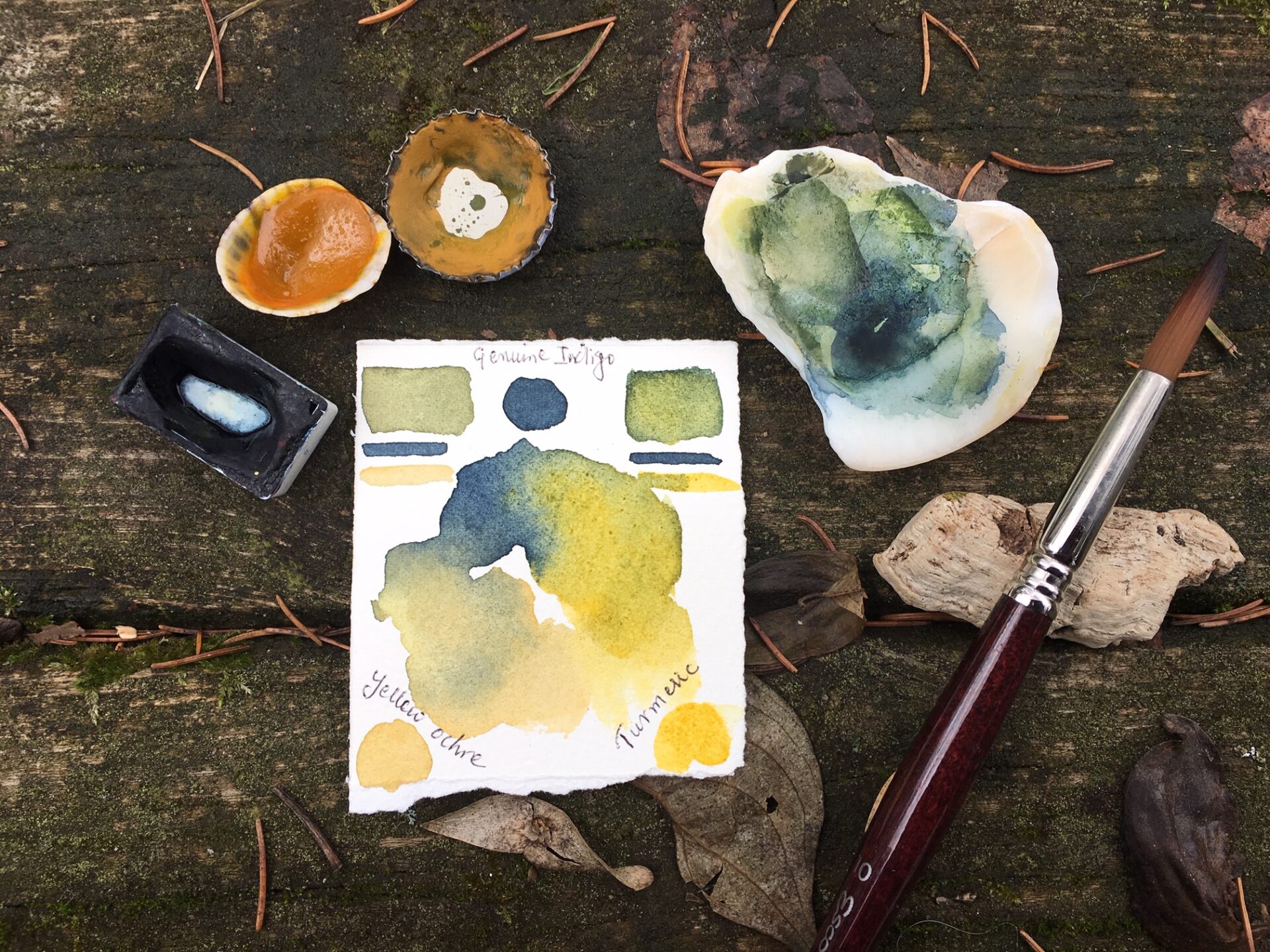
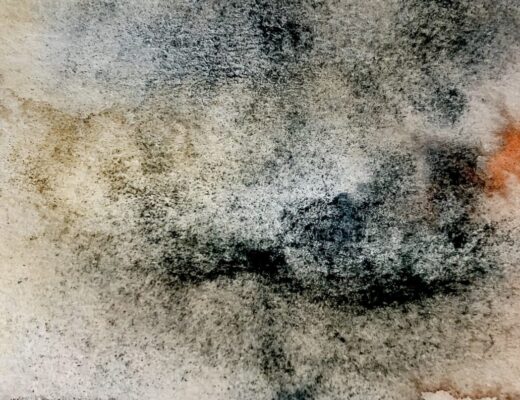
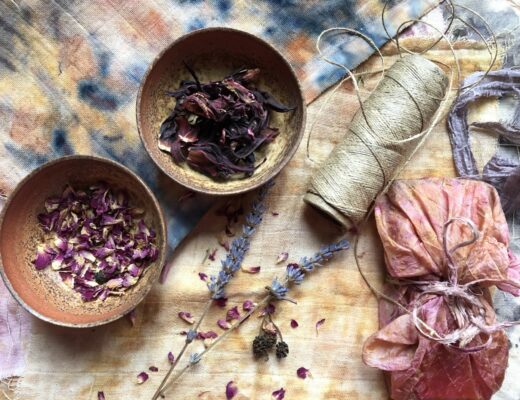
No Comments